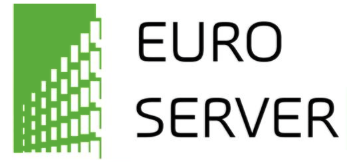Euroserver Project Targets Green Datacenters

A European "green computing" effort is taking a new approach to datacenter scaling while attempting to rein in IT equipment density and energy consumption.
The Euroserver project that includes European electronics heavyweights such as ARM Ltd. and STMicroelectronics is pursuing a next-generation "micro-server" or "server on a chip." By shrinking the size of future server components, the argument goes, datacenter energy consumption can be drastically reduced.
"The processor, the memory hierarchy, I/O, the system interconnects and the systems’ software all require fundamental changes to match the application’s performance in less space and with drastically lower energy costs," the consortium asserts.
The project relies heavily on current low-power ARM multicore processors along with a server architecture that leverages an emerged chip scaling technique called 3-D integration that maximizes available space to scale the number of cores along with memory and I/O.
Euroserver members claim their chip architecture can be managed by emerging systems software to provide "system-wide virtualization and efficient resource use by cloud applications."
As for energy efficiency, the group said a Euroserver prototype would demonstrate how the approach could deliver an estimated ten-fold increase in datacenter energy efficiency by 2020.
Such a ground-up approach makes sense as efforts to improve datacenter metrics like power usage effectiveness, or PUE, are stalling. A datacenter survey released in June found that investments aimed at improving PUE are hitting a wall.
The European group's micro-server proposal for future datacenters focuses primarily on leveraging U.K. processor specialist ARM's 64-bit cores. The chip intellectual property company has been focusing on low-power designs that can scale to provide processing power when needed.
The other part of the energy efficiency equation is the use of a chip packaging technique called a silicon interposer that would be used to reduce the physical space between processor cores and memory. The third innovation in the micro-server approach focuses on improving "energy proportionality," the consortium said.
The micro-server architecture consisting of multiple "chiplets" placed on a silicon interposer would be managed by system software that oversees server resources while isolating workloads when they use shared server resources like I/O, storage, memory and interconnects.
The next-generation system software would consist of multiple "coherence islands" that include a hypervisor and OS. Virtual machines would sit on top of the OS/hypervisor.
Along with reduced physical volume of the chip interposer module, the consortium said it would also leverage an emerging energy efficient chip manufacturing technique championed by STMicroelectronics called FD-SOI, or Fully Depleted Silicon-on-Insulator. The chip scaling technique is one of several low power approaches as semiconductor manufacturers approach the limits of Moore's Law.
Along with datacenter and cloud computing, Euroserver said its approach could also find applications in telecommunications networks and embedded systems. Among the "typical workloads" for the proposed micro-server are web-server hosting, distributed databases like Hadoop, relational databases such as MySQL and network communications.
Besides ARM and STMicroelectronics, Euroserver consortium members include the Barcelona Supercomputing Center, the French atomic energy commission, Italy's Eurotech, the Technical University of Dresden in Germany, the Foundation for Research & Technology's Institute for Computer Science, Sweden's Chalmers University of Technology, and cloud platform vendor Onapp.











